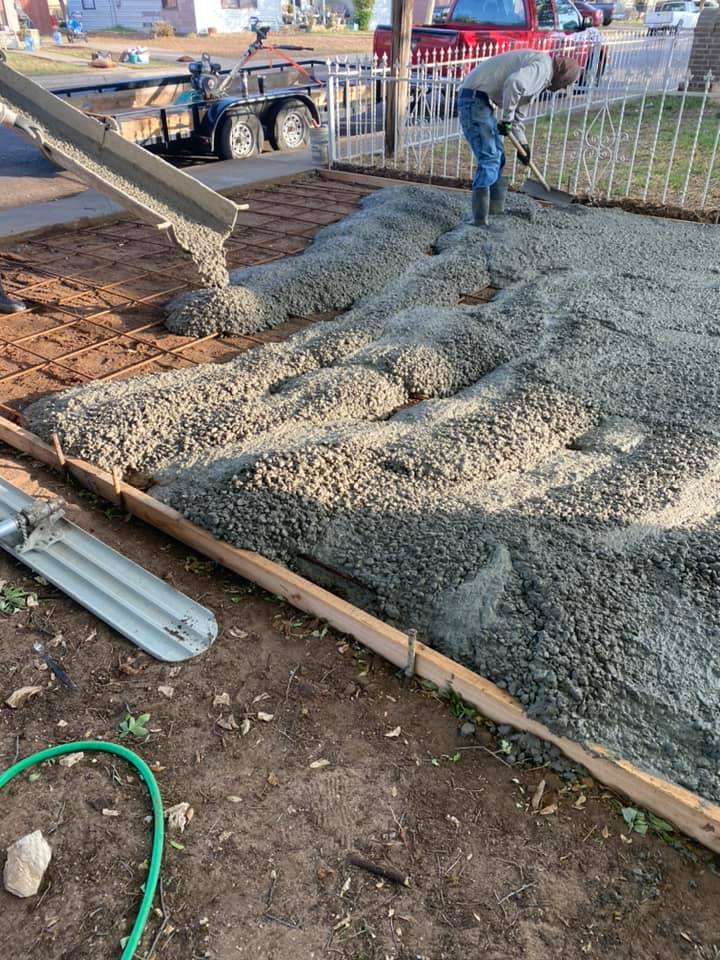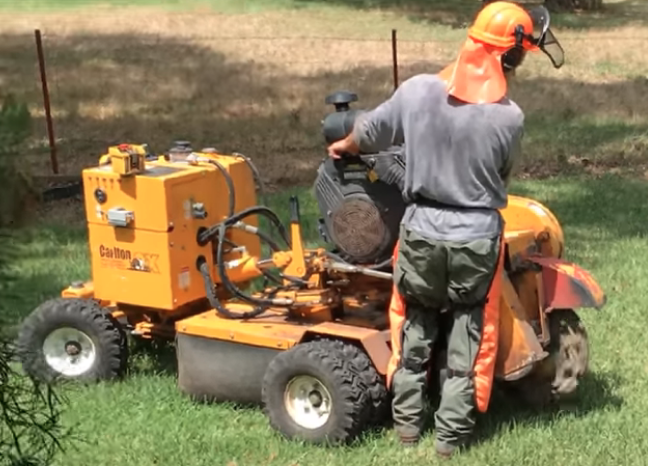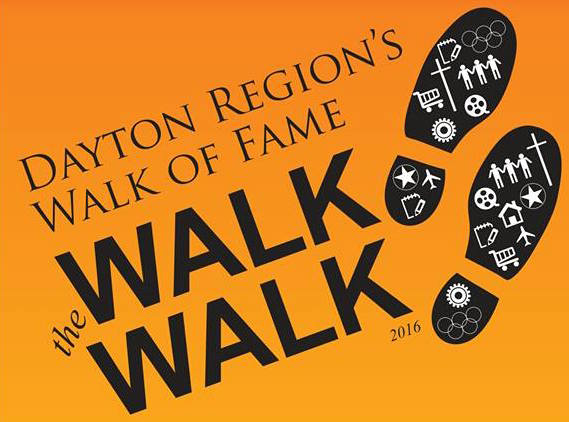Join us on Friday, May 12th for our annual Walk the Walk Celebration.
We’ll celebrate honorees and announce the 2017 class of inductees. With live music, food trucks, and a children’s play area,
Wright Dunbar will be the place that night!
The Walk of Fame is a significant legacy of the City of Dayton’s bicentennial celebration in 1996. As of 2016, 166 individuals have been recognized on the Dayton Region’s Walk of Fame for their outstanding and enduring personal or professional contributions to the community, nation and the world in the areas of:
Arts and Culture
Aviation
Business/Corporate Leader
Community Service
Education
Entertainment/Media
Environment
Government/Military
Invention/Innovation
Medicine
Philanthropy
Science
Significant Personal Achievement
Sports
Since its inception in 1996 as a part of the City of Dayton’s bicentennial celebration, individuals have been recognized on the Dayton Region’s Walk of Fame for their outstanding and enduring personal or professional contributions to the community, nation and the world.
The Dayton Region’s Walk of Fame is installed in the sidewalks along West Third Street between Shannon and Broadway Streets in the historic Wright-Dunbar Business District and can be enjoyed year-round. Visit the place where three exceptional men, Orville and Wilbur Wright, and Paul Laurence Dunbar called home. Begin your visit at the Dayton Aviation Heritage National Historical Park, where you can chat with knowledgeable staff, pick up a Walk of Fame walking tour brochure, information, and directions to other historical sites, and find out about general programs and special events during your visit.
Brief History of the Dayton Region’s Walk of Fame
Since its inception in 1996 as part of the City of Dayton’s Bicentennial Celebration, the Dayton Region’s Walk of Fame has recognized 156 outstanding individuals and groups for their enduring personal or professional contributions to the community, nation, and the world.
In 2003 the Walk of Fame was moved from the Dayton International Airport to the Wright-Dunbar Historic District and is now managed and supported by Wright Dunbar, Inc. Granite pavers are located on the sidewalks on both sides of West Third Street between Shannon and Broadway Streets and on Williams Street.
Wright Dunbar, Inc., a non-profit 501(c)(3) organization, is the catalyst and facilitator for urban community and economic revitalization of the historic Wright-Dunbar Historic District and the West Third Street corridor. Its vision is to create a vibrant, urban, walkable community of innovation, creativity, and collaboration where diverse families, businesses, neighbors, and visitors live, work, play, and learn together as a testimony to Dayton’s rich history.
The Walk of Fame and the annual celebratory event provide the region an opportunity to celebrate the unique contributions of past and present citizens, and it also provides funds to support the program and the upkeep of the Walk. Visitors from across the United States and schoolchildren in the region visit the Walk to be inspired by and learn about the men and women honored in the Walk of Fame.
Dayton Region’s Walk of Fame Inductees 1995-2015
Dr. Irwin M. Abrams
Lucinda W. Adams
The Honorable State Representative David D. Albritton
Vincent Groby Apple
Major General Harry G. Armstrong, MD
Paul “Easy” Arnold
Marie S. Aull
Eliam E. Barney
Reverend DeSoto Bass
Suzanne M. Bassani
Harry C. Baujan
Clark E. Beck
Arthur Beerman
Loren M. Berry
Jeraldyne Blunden
Erma Bombeck
The Honorable Edward Grimes Breen
Katharine Kennedy Brown
Clayton John Bruckner
Si Burick
Milton Caniff
Julia Shaw Carnell
Iula O. Carter
Lester LeFevre Cecil
Celebration Dayton ‘96
Charles Ritter Collett
Jeanne Comer
Charlotte Reeve Conover
George C. Cooper
Governor James M. Cox
Tom D. Crouch
Levitt Luzern Custer
Gussie Lord Davis
Willis “Bing” Davis
Carleton William “Carl” Day
Dayton Marcos
The Dayton Triangles football team
Colonel Edward A. Deeds
Joseph R. Desch
Phil Donahue
Electra C. Doren
Ralph and Christine Dull
Paul Laurence Dunbar
Lieutenant Colonel Charity Edna Earley
Gerard “Fuzzy” Faust
The Honorable Judge Arthur O’Neil Fisher
Brother Raymond L. Fitz
Dr. August F. Foerste
Ermal C. Fraze
Gem City Chorus
Major Dominic Salvatore Gentile
Harvey Dunn Geyer
Jerry Gillotti
Lillian Gish and Dorothy Gish
William G. Goodwin
Annae Barney Gorman
Richard H. Grant, Sr.
Barrett K. Green
Anne S. Greene
Lewis B. Gunckel
Clark J. Haines
Jesse “Pop” Haines
The Honorable Congressman Tony P. Hall
Virginia Hamilton
Keith Harrison
Michael Hauer
Colonel Dean E. Hess
Clarence Charles Hobart
Dr. John Hole
Dale Huffman
Horace M. Huffman, Jr.
Dr. Lewis Albert Jackson
John L. Janning
Edward “Al” Johnson
Jacob O. Joyce
Milton Kantor
Paul Katz
Charles F. Kettering
Virginia Kettering
William P. Lear
The Honorable State Representative Lloyd E. Lewis, Jr.
Evangeline Lindsley
Neal V. Loving
Alyce Downing Lucas
Frederic Charles MacFarlane
Herbert Woodward Martin
William Preston Mayfield
The Honorable State Representative C.J. McLin, Jr.
John A. McMahon
George Mead
Reverend Leo Meyer, S.M.
Thomas Midgley, Jr.
Daniel W. Mikesell
John E. Moore, Sr.
Arthur E. Morgan
Edwin C. Moses
Phoebe Anne Mosey
Ervin J. Nutter
Zoe Dell Nutter
The Ohio Players
James A. Parsons, Jr.
John H. Patterson
Margaret E. Peters
Mike Peters
Louis F. Polk
Dr. David H. Ponitz
Doris Ponitz
Esther Price
Reverend Edward A. Puff
Jane Reece
The Honorable Judge Walter Herbert Rice
Frederick Rike
Miriam Rosenthal
Mac Ross
Fritz J. Russ and Dolores H. Russ
Mike Schmidt
Betty Schmoll
Major Rudolph Schroeder
Robert Keyser Schul
Josephine L. Schwarz and Hermene Schwarz
LaVerne Kenon Sci
Gerald Sharkey
Martin Sheen
John Q. Sherman and William C. Sherman
John D. Siebenthaler
Ned Sifferlen
David A. Sinclair
Frederick C. Smith
Sister Dorothy Stang
Frank Stanton
Tony Stein
Dr. Rembert E. Stokes
Frank M. Tait
Charlie Taylor
Charles A. Thomas
Louise Troy
University of Dayton Men’s Basketball Program
Dr. Hans J. P. von Ohain
Don Wayne
Calvin J. Werner
Dr. Charles H. Wesley
Jonathan Winters
Mitchell “Booty” Wood
Jean V. Woodhull
Alice Woodward
Orville Wright
Wilbur Wright
Chief Rudolph F. Wurstner
Colonel Charles Young
Eugene Edward Young, Jr.
Rosamond M. Young



